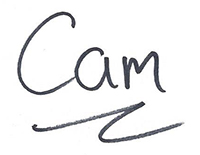Prompted from one of my journal entries around the time that Star Forge was released. — C.
—–

Particularly in traditional publishing, it’s a custom for writers to write the first book of what they suspect could well be a series, and sell it as a standalone book.
The traditional publishers also market the book as a standalone, until and if there are enough sales of the first book to justify acquiring the second book in a series…and because of their deplorable habit of printing to net, quite often the sales of that second book fail to live up to expectations and the rest of the series is never published.
If you’ve ever wondered why a series you’ve enjoyed never has more than a book or two published, there’s your answer.
Indie publishers don’t have that restriction (thank heavens!), but there is still a risk in publishing a brand new series.
So when I published the first book in the Imperial Hammer series, Hammer and Crucible, I wrote it as if it was a standalone book, even though I fully intended to write a series. But I didn’t plot out the series as I normally do. I just figured out the first book, and made it as cool and interesting as I could. I made it a book I would want to read.
My intention was to see what feedback I got. It was always possible that I could get paper wads thrown at me, or the publishing equivalent of them, at least. And I was also thinking that if there was an aspect of Danny’s world that people objected to, or a character they didn’t like, I could adjust with the next book, when I got to writing it.
Feedback was very good, though. I found myself staring at the blank page, having to plot the second book, Star Forge.
And that was when I learned that I had written myself into a couple of corners with the characters. The biggest corner involves discussing a hug spoiler, so I won’t mention it here, in case you haven’t yet started the series.
If you’re curious to know what corner I had to write myself out of, and you don’t mind spoilers, or you’ve read the first or both books, ask me or leave your question in comments. I’ll share details with you directly.
Once I had figured out how to get rid of the boxed-in corner I was in, the book spat out in about ten days. I was starting to get the idea that this series was exactly right for me.
This was yet another reminder to me that some of the most creative work ever completed came about because of restrictions and limitations. Artists and writers who have suffered injuries or chronic conditions that limit their abilities have found amazing ways to express themselves that incorporate those limitations. Johan Sebastian Bach, for instance.
Or there are the artists who deliberately invoke limitations to experiment, such as Austin Kleon’s newsprint blackout poetry.
Writers can hew to severe word limits, too. Perhaps the most famous example of that is Ernest Hemingway’s six word story: “For sale: Baby shoes, never worn.”
Science fiction may seem like a no-holds-barred genre, but there is a limitation that authors must deal with, that underlines nearly every story in the genre, and most especially in space opera: How the author chooses to deal with faster-than-light travel (or not) and transportation between worlds. That choice impacts every facet of their story.

I’d love to know the corner and your work-around.
It’s a great series (X2) and it would have been an epic shame if you hadn’t continued beyond that first novel as each book just seemed to get even better than the last!
Well, thank you, Ingrid! Glad you enjoyed the series.
I’ll slip you an email with the “corner” explained.
Cam